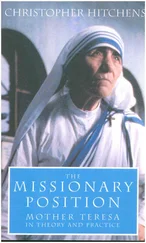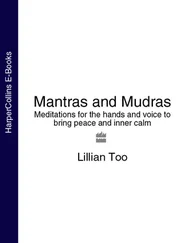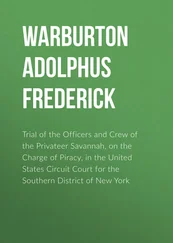1. Conservation of energy was not immediately recognized but was already implicit in Newton’s laws of mechanics.
2. Richard Swinburne, The Existence of God (Oxford: Clarendon Press, 1979), Chapter 29.
3. It is commonly thought that only nuclear reactions convert between rest and kinetic energy. This also happens in chemical reactions. However, the changes in the masses of the reactants in that case are too small to be generally noticed.
4. Stephen W. Hawking, A Brief History of Time: From the Big Bang to Black Holes (New York: Bantam, 1988), Chapter 17.
5. Technically, the total energy of the universe cannot be defined for all possible situations in general relativity. However, in V. Faraoni and F. I. Cooperstock, “On the Total Energy of Open Friedmann-Robertson-Walker Universes,” Astrophysical Journal 587 (2003): 483–486, it is shown that the total energy of the universe can be defined for the most common types of cosmologies and is zero in these cases. This included the case where the density is critical.
6. Alan Guth, The Inflationary Universe (New York: Addison-Wesley, 1997).
7. The mathematical derivation of the curves on this plot is given in Appendix C of Victor J. Stenger, Has Science Found God? The Latest Results in the Search for Purpose in the Universe (Amherst, NY: Prometheus Books, 2003), pp. 356–357.
8. The mathematical proof of this is given in Appendix A, Stenger, Has Science Found God? pp. 351–353.
9. Pope Pius XII, “The Proofs for Existence of God in the Light of Modern Natural Science,” Address by Pope Pius XII to the Pontifical Academy of Sciences, November 22, 1951, reprinted as “Modern Science and the Existence of God,” Catholic Mind 49 (1972): 182–192.
10. William Lane Craig and Quentin Smith, Theism, Atheism, and Big Bang Cosmology (Oxford: Clarendon Press, 1997).
11. Clifford M. Will, Was Einstein Right? Putting General Relativity to the Test (New York: Basic Books, 1986).
12. Stephen W. Hawking and Roger Penrose, “The Singularities of Gravitational Collapse and Cosmology,” Proceedings of the Royal Society of London , series A, 314 (1970): 529–548.
13. Hawking, A Brief History of Time , p. 50.
14. Keith Parsons, “Is There a Case for Christian Theism?” In Does God Exist? The Debate Between Theists & Atheists , J. P. Moreland and Kai Nielsen (Amherst, NY: Prometheus Books, 1993), p. 177. See also Wes Morriston, “Creation Ex Nihilo and the Big Bang,” Philo 5 , no. 1 (2002): 23–33.
15. William Lane Craig, The Kalâm Cosmological Argument , Library of Philosophy and Religion (London: Macmillan, 1979); The Cosmological Argument from Plato to Leibniz , Library of Philosophy and Religion (London: Macmillan, 1980).
16. Smith in Theism, Atheism, and Big Bang Cosmology , by Craig and Smith; Graham Oppy, “Arguing about the Kalâm Cosmological Argument,” Philo 5, no. 1 (Spring/Summer 2002): 34–61, and references therein; Arnold Guminski, “The Kalâm Cosmological Argument: The Questions of the Metaphysical Possibility of an Infinite Set of Real Entities,” Philo 5, no. 2 (Fall/Winter 2002): 196–215; Nicholas Everitt, The Non-Existence of God (London, New York: Routledge, 2004), pp. 68–72.
17. David Bohm and B. J. Hiley, The Undivided Universe: An Ontological Interpretation of Quantum Mechanics (London: Routledge, 1993).
18. I discuss this in detail in Victor J. Stenger, The Unconscious Quantum: Metaphysics in Modern Physics and Cosmology (Amherst, NY: Prometheus Books, 1995).
19. Quantum mechanics becomes classical mechanics when Planck’s constant h is set equal to zero.
20. David Atkatz and Heinz Pagels, “Origin of the Universe as Quantum Tunneling Event,” Physical Review D25 (1982): 2065–2067; Alexander Vilenkin, “Birth of Inflationary Universes,” Physical Review D27 (1983): 2848–2855; David Atkatz, “Quantum Cosmology for Pedestrians,” American Journal of Physics 62 (1994): 619–627.
21. Victor J. Stenger, The Comprehensible Cosmos: Where Do the Laws of Physics Come From? (Amherst, NY: Prometheus Books, 2006), supplement H.
22. J. B. Hartle and S. W. Hawking, “Wave Function of the Universe,” Physical Review D28 (1 83): 2960–2975.
23. Hawking, A Brief History of Time , pp. 140–141.
24. E. P. Tryon, “Is the Universe a Quantum Fluctuation?” Nature 246 (1973): 396–397; Atkatz and Pagels, “Origin of the Universe as Quantum Tunneling Event”; Alexander Vilenkin, “Quantum Creation of Universes,” Physical Review D30 (1984): 509; Andre Linde, “Quantum Creation of the Inflationary Universe,” Lettere Al Nuovo Cimento 39 (1984): 401–405; T. R. Mongan, “Simple Quantum Cosmology: Vacuum Energy and Initial State,” General Relativity and Gravitation 37 (2005): 967–970.
25. Stenger, The Comprehensible Cosmos.
26. E. Noether, “Invarianten beliebiger Differentialausdrücke,” Nachr. d. König. Gesellsch. d. Wiss. zu Göttingen, Math-phys. Klasse (1918): 37–44; Nina Byers, “E. Noether’s Discovery of the Deep Connection between Symmetries and Conservation Laws,” Israel Mathematical Conference Proceedings 12 (1999), http://www.physics.ucla.edu/~cwp/articles/noether.asg/noether.html(accessed July 1, 2006). This contains links to Noether’s original paper including an English translation.
27. Walter Truett Anderson, The Truth About the Truth (New York: Jeremy P. Tarcher/Putnam, 1996).
28. Bede Rundle, Why There Is Something Rather Than Nothing (Oxford: Clarendon Press, 2004).
29. Frank Wilczek, “The Cosmic Asymmetry Between Matter and Antimatter,” Scientific American 243, no. 6 (1980): 82–90.
30. Stenger, The Comprehensible Cosmos , supplement H.
1. It should be apparent that in discussing these things I am speaking only for myself and that in this chapter I leave behind me any claim to special expertise.












